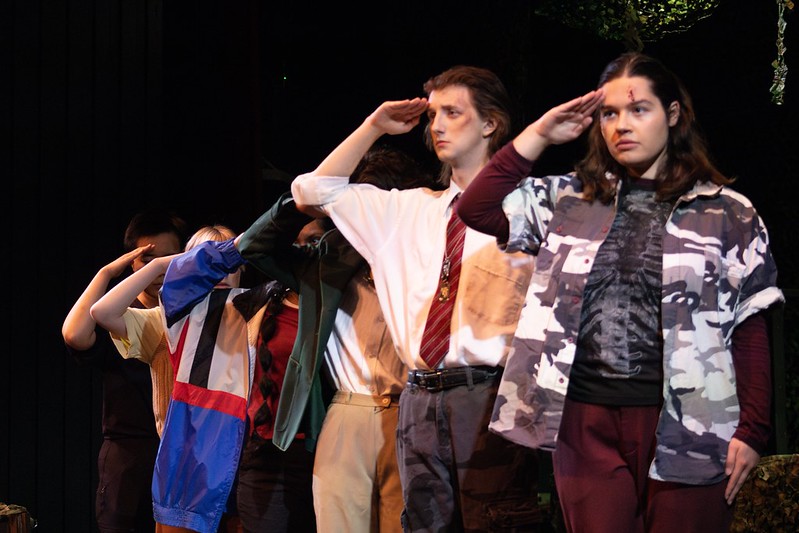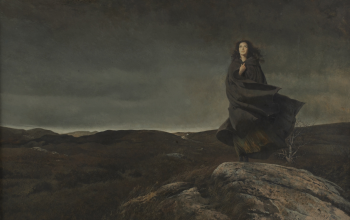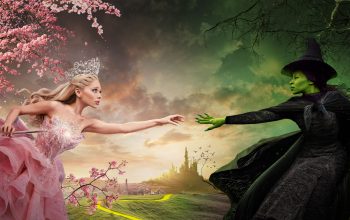A dozen British boys, one island, and a whole lot of conch shells.
Caroline Switkowski, Arts Editor
William Golding’s Lord of the Flies has long been heralded as a chilling exploration of human nature. Its stage adaptation brings this brutality to life in a visceral, immersive way. The production I attended by the SMC Troubadours transformed the classic novel into a raw, fast-paced theatrical experience that magnified the themes of power, survival, and the thin veneer of civilization.
From the moment the stage lights illuminated a fragmented, wreckage-strewn set representing the remains of a crashed plane, it was clear that this adaptation would lean heavily into the play’s physicality. I was impressed by the way the stage crew was able to use such a small stage and so few major pieces. The design was sparse yet effective, with hanging vines to open the space and towering jungle structures creating a claustrophobic atmosphere, mirroring the boys’ descent into savagery. The sound design, featuring distant waves crashing and eerie, animalistic cries, heightened the sense of isolation and danger.
At the core of the production were the performances, which drove home the psychological unraveling of the characters. Ralph, played with an initial confidence that gradually eroded into desperation, was a compelling leader struggling against forces beyond his control. Jack, on the other hand, was electric: his transformation from an arrogant choirboy to a bloodthirsty dictator was terrifyingly believable. The actor’s physicality — wild gestures, menacing stares, and primal movements — commanded attention, making it impossible to look away as he seized power. Piggy’s portrayal was equally heartbreaking; his steadfast belief in reason and order made his fate all the more tragic.
One of the most powerful aspects of the adaptation was its use of movement and choreography. The boys’ descent into chaos was not only reflected in their dialogue, but also in the increasingly erratic, animalistic movements of the ensemble. The precisely choreographed hunting scenes were frenzied and terrifying, underscored by pounding drums and flickering lights that created an almost ritualistic intensity. The killing of Simon — which personally made me tear up — was staged with an unrelenting, hypnotic energy that left the audience in stunned silence.
By the time the final scene unfolded — Ralph trembling before the indifferent, uniformed officer who rescues them — the contrast between the brutal, primal world the boys had inhabited and the supposed order of civilization was stark. The production left the audience with an unsettling question: how thin is the line between order and chaos?
In the end, the Troubadour’s The Lord of the Flies was a gripping experience that did justice to Golding’s novel while leveraging the unique strengths of live theater. Its haunting performances, immersive staging, and raw energy made it an unforgettable exploration of the darkness lurking within humanity.
Photo Credit: SMC Flickr/Ishan




